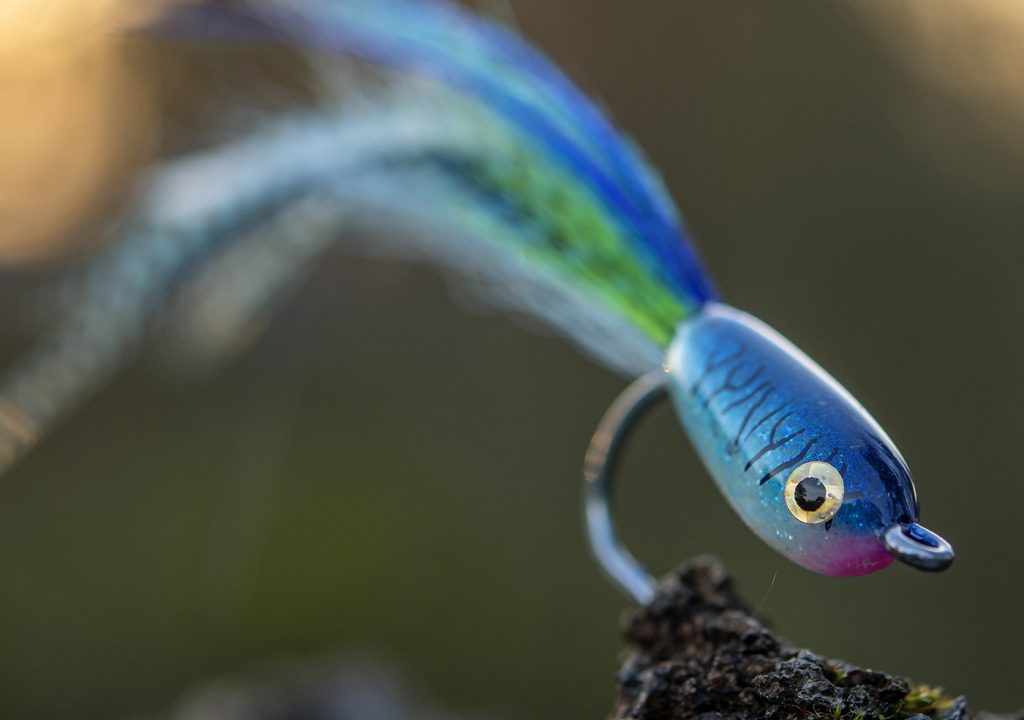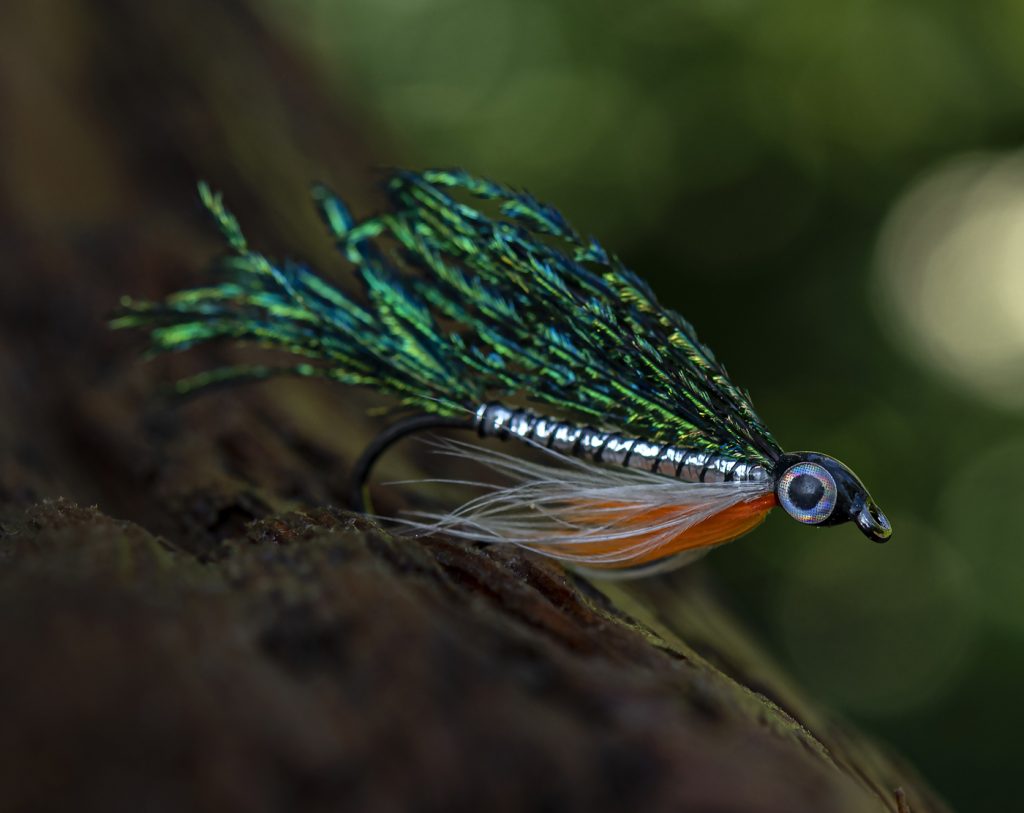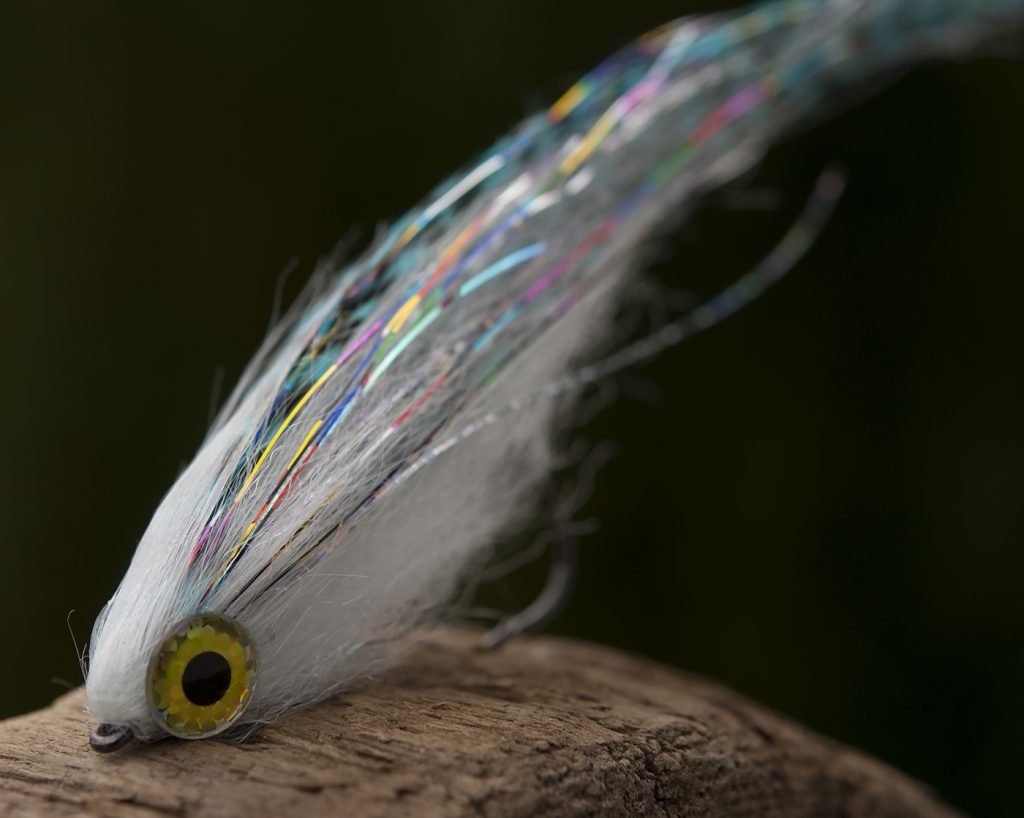
I was invited to tie flies at the annual Black Friday event at Nordic Anglers’ show room last Friday. When I tie flies at events like these, I always focus on tying patterns that don’t take too long. Maybe with a focus on something relevant for the season and if I can fill a vacant space in my own box, even better. I tied a simple sand eel imitation (well, many), gave some away, talked hooks with some of the customers and even took home a few flies.
On the way home, I thought about eyes on flies, Eyes on flies is nothing new, far from it. Nor is the discussion on whether they’re important or not. I suppose it’s safe to say that they are not important as such. I think any fly, usually tied with eyes in some form or other, will do quite well without, The question is of course if they Improve a fly or not?
I don’t know, but I know that I think they do. There can be little doubt that predators to some degree will focus on the eye of a bait fish. That received attention early on. The classic, American streamers are often equipped with an eye. An intentionally large thread head was varnished black and allowed to dry. Then given a large dot with white varnish, which was then allowed to dry and finally finished with a small black dot in the middle of the white. Three steps with a lot of waiting time in between.

Eyes are one of the areas that has undergone a lot of development in the last 30 years or so. One major leap was Bob Popovics’ Surf Candy. Popovics came up with the idea of encasing the eyes in epoxy and at the same time shaping a perfect, elongated sand eel head shape. Furthermore the technique resulted in flies that last forever, unless you shattered them on a rock. Printed eyes on silver foil were an important factor in the design.
Bob Popovics used two-part epoxy. Strong, but cumbersome to use. It requires a fairly precise mix and will stay runny for 2-3 minutes (providing you’re using 5-minute epoxy), so the fly needs to be looked after until the epoxy sets. The first light curing glues made the tying of “glue-head-flies” much faster. Among the first were Bug Bond and Tuffleye and over the last decade, many, many more brands are now carrying UV-curing glues.
Even easier than that are the different heads now available. A simple plastic or silicone head that you push over the hook eye and secure with thread or glue makes forming the head so easy and it takes 30 seconds. Drop in an eye and a dab of UV-glue and the head is done in two minutes.
On the point of important or not, I think it’s safe to say that no bait fish imitation becomes less effective with eyes, Whether you’re using glue or a pre made head, there’s one important consideration to make. Both of them take up some space under the hook shank and a bad choice of hook can result in narrowing the hook gap, leading to less chance of a good hook-up. Choose a wide gap hook. We do of course have several models suited to these flies. Short shank hooks are popular for Surf Candy-type sandeels, so an Ahrex SA274 Curved Salt is a good choice. As is the NS172 Curved Gammarus if you want one with a slightly lighter wire. The SA280 Minnow is specifially made for bait fish and does well too. If you need a longer shank, take a look at the SA220 Streamer or its NS counterpart, NS110 Streamer.

